Welcome to the 3rd blog in a 3 part series highlighting the beautiful wildflower seeds that are in our Hill Country Pollinator Mix seed bags. If you’ve been following the series, this advice will sound familiar: Get your wildflower seeds planted in fall to enjoy the beautiful blooms in spring. Our goal this month and next is to make planting wildflowers successfully an easy task for you.
Click the following links for Part 1, Part 2, part 4, and our bluebonnet blog in the rest of the wildflower series.


9 Hill Country Wildflowers for San Antonio, and the Hill Country in Texas
Indian Blanket (Gaillardia pulchella)
A gorgeous annual wildflower that looks like a fiery pinwheel with daisy-like red petals tipped with bright yellow. You just can’t look at these and not be delighted, and it’s the same with butterflies! Growing to about 30″T, Indian Blanket will bloom all summer, and given extra water in summer, the bloom period of these wildflowers could last longer. Avoid planting in rich soil as blooms will be sparse. Drought and heat tolerant, yahoo!
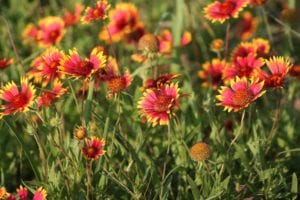

Lance Leaved Coreopsis (Coreopsis lanceolata)
Lance Leaved Coreopsis is also known as Lance Leaved Tickseed. A perennial, evergreen wildflower that boasts sunshine-yellow flowers late spring into summer (with regular deadheading). Attracts butterflies and other beneficial insects. This wildflower can be planted in sun to shade, with more blooms appearing the sunnier it is. Will reseed readily, so plant where you don’t mind new plants popping up; you can thin these plants by clump dividing if they get too crowded. Grows to 18″ – 24″ at maturity and can be planted in most well draining soil types.
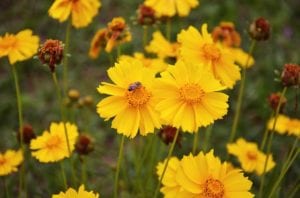

Lemon Mint (Monarda citriodora)
This annual wildflower is also called Horsemint, and Lemon Beebalm. The tubular flowers Lemon Mint provide are a delight for hummingbirds, as well as butterflies, bees, and other beneficials. Expect this wildflower to return to the garden year after year as it readily reseeds itself. The leaves of Lemon Mint can be used in teas. Mature size is about 2.5′, and while it prefers alkaline soil, it can tolerate other soils as long as they are well-draining. A fragrant wildflower (leaves have lemon aroma when rubbed), Lemon Mint blooms in a range of lavender hues. Drought tolerant and deer resistant.
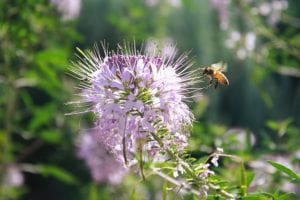

Mexican Hat (Ratibida columnifera)
These adorable wildflowers are also called ‘Mexican Hat’ due to their likeness to the traditional wide-brimmed sombrero. Growing to mature average size of 18″ though they can also reach up to 36″ tall. You’ll find these cheerful wildflowers in colors of red and orange or sometimes all yellow. They bloom from late spring and can carry into fall when adequate moisture is present. Repels deer and is extremely drought tolerant, hooray!


Missouri Primrose (Oenothera macrocarpa)
The delicate pale yellow hue of the Missouri Primrose is just, well, pretty. Tolerates poor soil (actually prefers it) and drought. Blooms spring through summer, with May and June being the peak blooming period. Each flower lasts a day. They grow 12′-24′ in a trailing habit and are pollinated by moths.


Moss Verbena (Verbena tenuisecta)
Clusters of deep-hued lavender to purple flowers entice pollinators to its nectar. A great drought tolerant wildflower. The foliage is somewhat fern-like, hence the name Moss Verbena. Full sun suits this sprawling wildflower just fine. Growing 12″ – 14″ Moss Verbena blooms most profusely March through July.
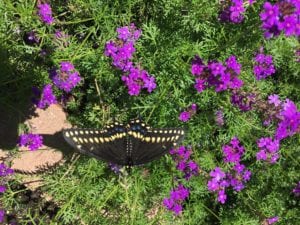

Plains Coreopsis (Coreopsis tinctoria)
The beauty of wildflowers keeps coming with the appearance Plains Coreopsis late spring into summer. Golden-yellow petals with a splash of maroon surround the purple-red center and the flower almost looks like a type of daisy. Plains coreopsis grows to mature size of about 24″ and produces masses of showy flowers, especially if it has rained a lot or they are given extra water in dry times. As with most wildflowers, you need to allow the flowers to reseed if you wish to have an amazing display of blooms the following year. Great option for a deer resistant wildflower.
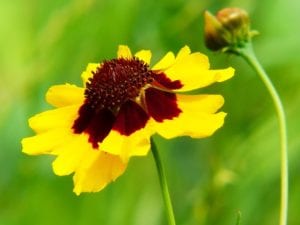

Prairie Coneflower (Ratibida columnifera)
These cute wildflowers are basically the all-yellow version of the “Mexican Hat” that we are use to seeing in our wildflower patches along the highways. Deer resistant, pollinator-attracting, these wildflowers grow about 12″ – 24″. These look spectacular in cut flower arrangements. Full sun, well-draining soil makes these Prairie Coneflowers grow best.
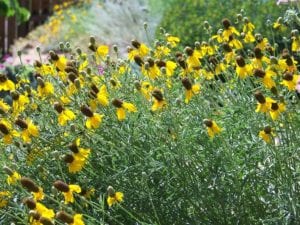

Prairie Verbena (Glandularia bipinnatifida)
Prairie verbena is a Texas-tough, perennial wildflower that loves to strut its stuff out in the full on sunshine. Gorgeous, lilac-purple clustered flowers offer nectar to the many pollinators from May through September (sometimes longer). Shearing verbena back can promote new blooms and denser growth. A low-growing, herbaceous perennial only tops about 4″-6″ in height.


So ends our 3rd installment of the ingredients in the Hill Country Pollinator Mix wildflower seed packages. Did you miss out on the first 2 blogs? You can click the following links to catch up: Part 1, Part 2, and follow with Part 4. Don’t forget about our Bluebonnet blog to learn all about our state flower. If these pictures and descriptions of wildflowers don’t get you excited, we might need to check your pulse! Here’s to planting wildflower seeds in fall, plenty of fall and early spring rain to get them going, and to the bountiful blooms you get to look forward to! Like the past couple of blogs, it seems fitting to end with another quote. This one is from Sheryl Crow: “No matter how chaotic it is, wildflowers will still spring up in the middle of nowhere.”
~ The Happy Gardener, Lisa Mulroy

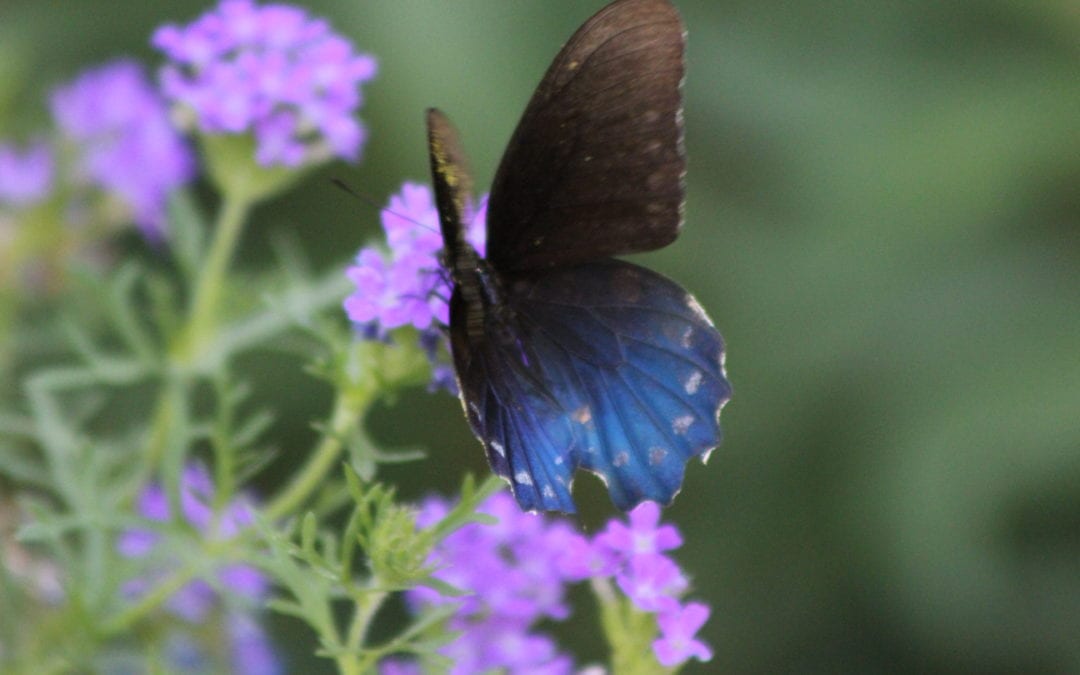
Can you order these seeds and cost
Hi Mary,
We do not currently have an online retail option. Our pollinator seed mix sold out through the fall, but we plan on bringing in more, especially when it’s the time to plant wildflowers in San Antonio. We do currently have individual packs of wildflower seeds in many different varieties at both of our locations. The seed packs range from $3.99 and up depending on the size of the packet, and the company we received them from.